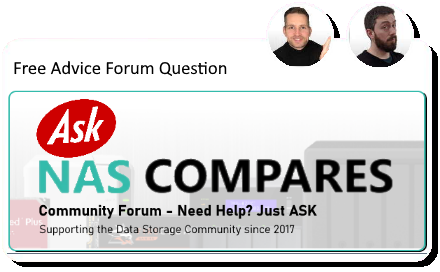08-20-2025, 03:35 PM
HI,
I am a researcher, and I want to buy a NAS to back up, store, and access that data in real time. My lab group consists around 12 members and we store our lab research data. We want to connect the nas to our institute server infracture so that we can access it directly from our computers when we log in with microsoft.
Our budget is around €2500-3000. Can you suggest which NAS will be suitable for us and also I had doubts about RAID, wether to use HDD,SSD hybrid or also use M.2 NVMe SSD.
So before buying any unnecessary NAS i want to be sure which suits best for us.
Tasks which we want to do is access files in real time which are photos, Docs and 3D images files which ranges from 500Mb to 2Gb each. This files we want to store it in NAS directly and run on our desktops.
Thank you,
Dhyey
I am a researcher, and I want to buy a NAS to back up, store, and access that data in real time. My lab group consists around 12 members and we store our lab research data. We want to connect the nas to our institute server infracture so that we can access it directly from our computers when we log in with microsoft.
Our budget is around €2500-3000. Can you suggest which NAS will be suitable for us and also I had doubts about RAID, wether to use HDD,SSD hybrid or also use M.2 NVMe SSD.
So before buying any unnecessary NAS i want to be sure which suits best for us.
Tasks which we want to do is access files in real time which are photos, Docs and 3D images files which ranges from 500Mb to 2Gb each. This files we want to store it in NAS directly and run on our desktops.
Thank you,
Dhyey





